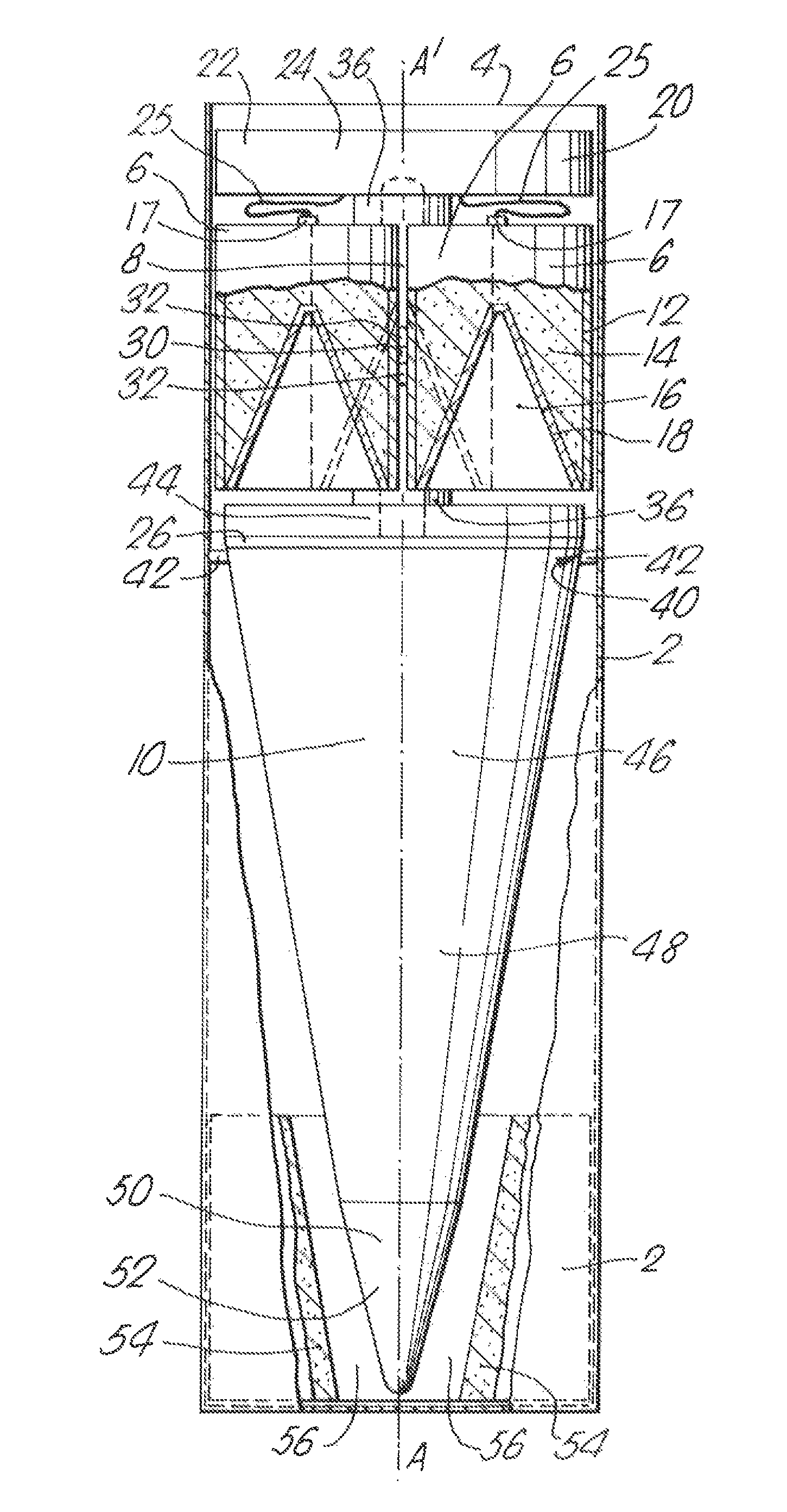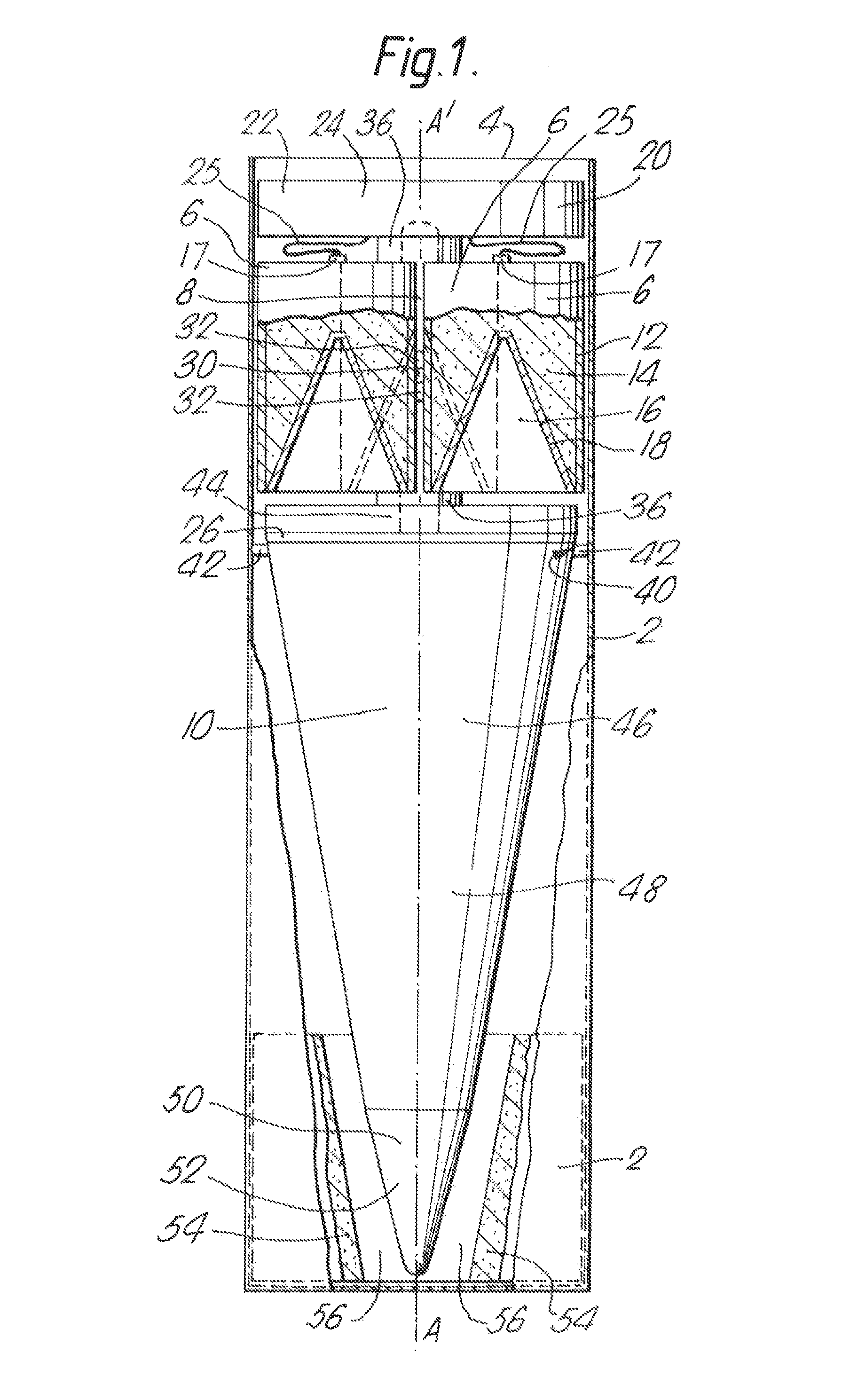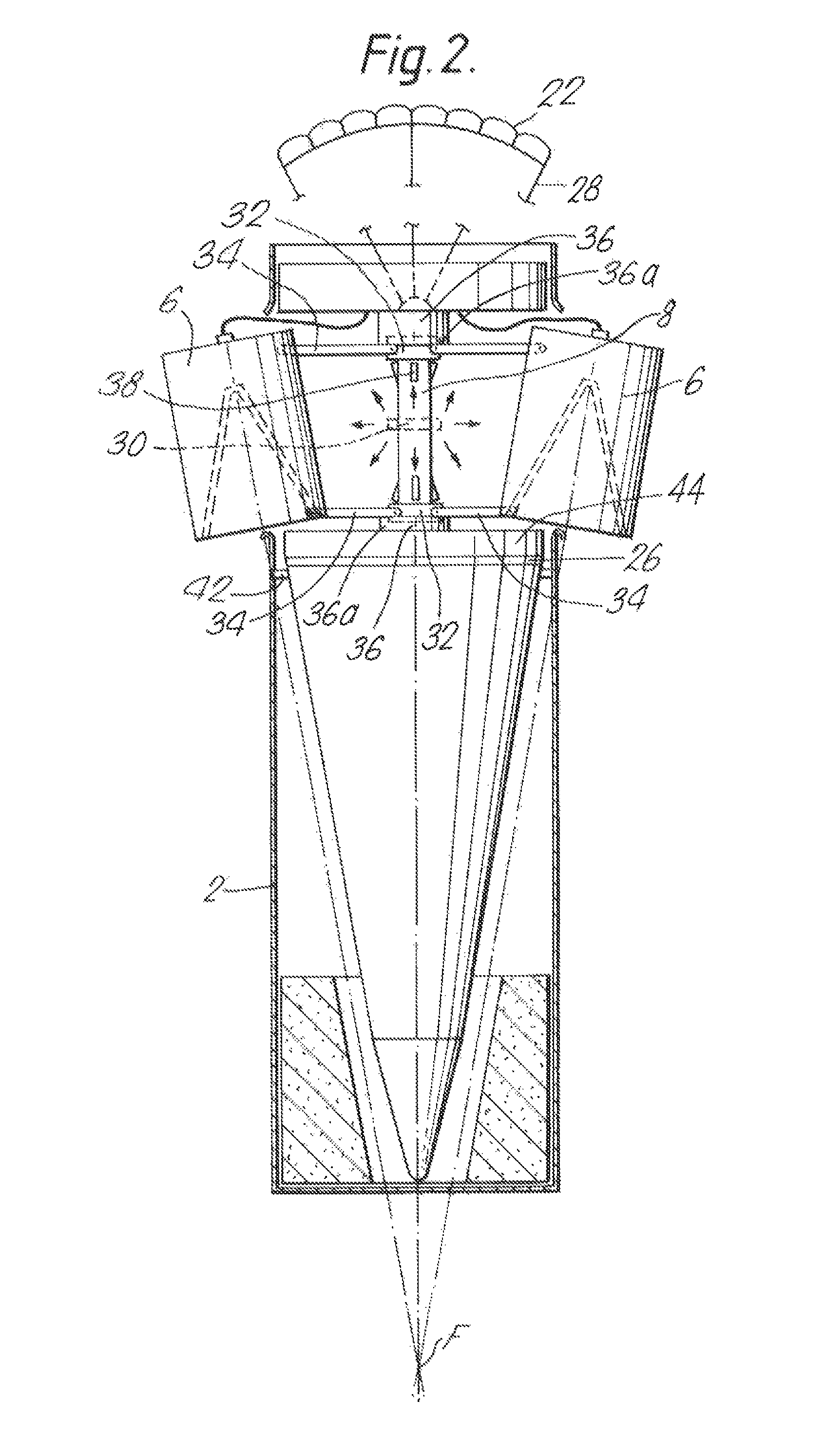Multi-charge munitions, incorporating hole-boring charge assemblies
a technology of charge assembly and munitions, which is applied in the direction of explosive charges, weapons, fall bombs, etc., can solve the problems of affecting the weight of known hollow charges cannot meet all requirements, and the maximum damage to the target is increased, so as to facilitate the emplacement of follow-through charges
- Summary
- Abstract
- Description
- Claims
- Application Information
AI Technical Summary
Benefits of technology
Problems solved by technology
Method used
Image
Examples
Embodiment Construction
[0043]Referring first to the embodiment illustrated in FIGS. 1 and 2, there is illustrated in FIG. 1 a reverse follow-through submunition with a longitudinal fore-and-aft axis AA′ consisting of a frangible cylindrical canister 2, with an open rear end 4, shown partly cut-away to reveal its contents. These contents consist primarily of three primary hollow charge munitions 6 positioned in a closely packed, parallel configuration about a support shaft 8 behind a conical encased secondary munition 10. The view of one of the primary munitions 6 is obscured by the other two and so its position is shown in broken outline. The two primary munitions 6 shown in solid relief are shown part-sectional, and each consists of a cylindrical casing 12 open at its forward end and containing a hole-boring shaped charge 14 of high explosive having a right-conical recess 16 in its forward face, and a rearward, axially-positioned detonator 17. The recess is lined with a low density liner 18 of non-explos...
PUM
 Login to View More
Login to View More Abstract
Description
Claims
Application Information
 Login to View More
Login to View More - R&D
- Intellectual Property
- Life Sciences
- Materials
- Tech Scout
- Unparalleled Data Quality
- Higher Quality Content
- 60% Fewer Hallucinations
Browse by: Latest US Patents, China's latest patents, Technical Efficacy Thesaurus, Application Domain, Technology Topic, Popular Technical Reports.
© 2025 PatSnap. All rights reserved.Legal|Privacy policy|Modern Slavery Act Transparency Statement|Sitemap|About US| Contact US: help@patsnap.com



